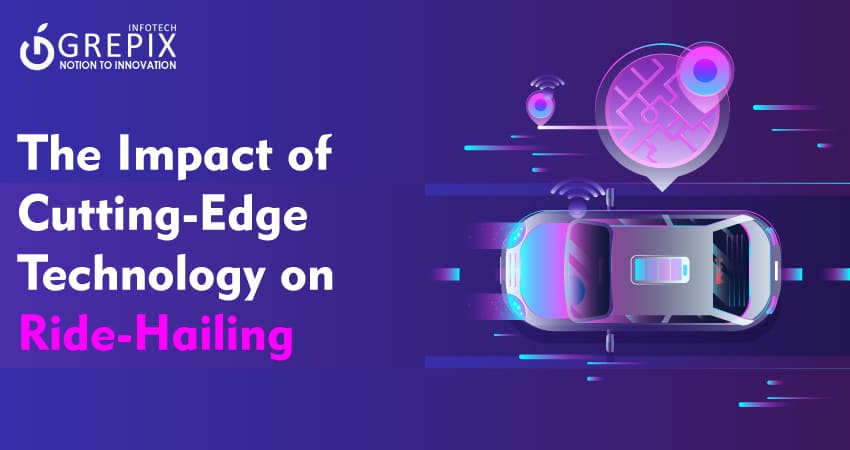The Impact of Cutting-Edge Technology on Ride-Hailing
In the past decade, the ride-hailing industry has experienced a dramatic transformation, driven by the relentless pace of technological innovation. From the early days of simply hailing a cab on the street, we've progressed to a world where a ride is just a few taps away on a smartphone. Companies like Uber, Lyft, and others have leveraged advanced technologies to revolutionize how we travel, making transportation more accessible, efficient, and personalized. This blog delves into the impact of these cutting-edge technologies on the ride-hailing industry, exploring how they have reshaped our daily commutes, improved safety and efficiency, and are paving the way for a future where autonomous vehicles may dominate our roads. Join us as we explore the technological advancements that are driving this transformation and what the future holds for ride-hailing services.
The ride-hailing industry has been transformed by cutting-edge technologies like AI, GPS, and autonomous vehicles. Companies such as Uber and Lyft have leveraged these innovations to enhance accessibility, efficiency, and personalization. GPS and navigation systems facilitate accurate ride matching and real-time tracking, while AI optimizes pricing, demand prediction, and safety. The rise of autonomous vehicles promises to further reduce costs and improve safety. Future trends include the integration of multi-modal transportation, personalized services, and sustainable solutions like electric vehicles. These advancements are reshaping urban mobility, making it more intelligent, reliable, and environmentally friendly.
The Evolution of Ride-Hailing Services
The concept of ride-hailing is not new; it has been around for centuries in various forms. However, the modern ride-hailing industry, as we know it today, began with the advent of smartphones and mobile applications. Companies like Uber and Lyft pioneered this space by leveraging technology to connect passengers with drivers, providing a convenient and efficient alternative to traditional taxi services.
GPS and Navigation Systems
One of the foundational technologies that revolutionized ride-hailing is the Global Positioning System (GPS). GPS technology allows drivers and passengers to pinpoint their exact locations, enabling seamless and accurate ride matching. It also facilitates real-time tracking of rides, ensuring safety and transparency for passengers.
Navigation systems, integrated with GPS, have further enhanced the efficiency of ride-hailing services. Drivers can now rely on turn-by-turn navigation, traffic updates, and optimal route suggestions to reach their destinations faster. This not only reduces travel time but also minimizes fuel consumption and operational costs.
Mobile Applications
The rise of smartphones and mobile applications has been a game-changer for the ride-hailing industry. Ride-hailing apps provide a user-friendly interface for passengers to book rides, track their drivers, and make payments effortlessly. These apps have also introduced features like fare estimation, ride-sharing options, and driver ratings, enhancing the overall user experience.
For drivers, mobile apps offer a platform to manage their rides, access navigation tools, and communicate with passengers. Additionally, driver-focused features such as earnings tracking and performance analytics help drivers optimize their services and improve their earnings.
The Role of Artificial Intelligence and Machine Learning
Artificial intelligence (AI) and machine learning (ML) have become integral to the ride-hailing industry, driving significant improvements in various aspects of service delivery.
Dynamic Pricing and Demand Prediction
AI-powered algorithms enable dynamic pricing, which adjusts fare rates based on real-time demand and supply conditions. During peak hours or in high-demand areas, fares may increase to balance demand and supply, ensuring that passengers can still find rides while incentivizing more drivers to be on the road.
Machine learning models also predict demand patterns, allowing ride-hailing companies to position drivers strategically in areas where they are most likely to get ride requests. This not only improves the efficiency of the service but also enhances the earnings potential for drivers.
Safety and Security
AI and ML are instrumental in enhancing the safety and security of ride-hailing services. For instance, facial recognition technology can be used to verify the identity of drivers and passengers, reducing the risk of fraud and ensuring that the right individuals are in the vehicle.
AI-powered monitoring systems can detect unusual driving patterns or behaviors, such as sudden stops or deviations from the planned route. This information can be used to alert authorities or initiate safety protocols, providing an additional layer of security for passengers.
Customer Support and Service Optimization
AI-driven chatbots and virtual assistants have transformed customer support in the ride-hailing industry. These tools can handle a wide range of inquiries, from booking issues to payment problems, providing quick and efficient resolutions without the need for human intervention.
Machine learning algorithms analyze vast amounts of data to identify trends and patterns, helping ride-hailing companies optimize their services. For example, by analyzing ride data, companies can identify popular routes, peak travel times, and areas with high demand, enabling them to allocate resources more effectively.
The Advent of Autonomous Vehicles
Perhaps the most groundbreaking technological advancement in the ride-hailing industry is the development of autonomous vehicles (AVs). Self-driving cars have the potential to revolutionize transportation by eliminating the need for human drivers, reducing costs, and improving safety.
Benefits of Autonomous Vehicles
- Cost Reduction: One of the most significant advantages of AVs is the potential to reduce operational costs. Without the need to pay drivers, ride-hailing companies can offer more competitive pricing, making rides more affordable for passengers.
- Safety Improvements: Autonomous vehicles are equipped with advanced sensors, cameras, and AI systems that enable them to navigate roads safely and efficiently. By eliminating human error, AVs can significantly reduce the number of accidents and improve overall road safety.
- Increased Efficiency: AVs can operate around the clock without the need for breaks, ensuring a consistent and reliable service. They can also communicate with each other to optimize traffic flow, reducing congestion and travel times.
Challenges and Considerations
Despite the promising potential of AVs, several challenges and considerations need to be addressed before they can be widely adopted in the ride-hailing industry.
- Regulatory Hurdles: The deployment of autonomous vehicles requires regulatory approval, which varies by region. Governments need to establish safety standards, liability frameworks, and operational guidelines for AVs.
- Technical Limitations: While AV technology has made significant strides, it is not yet perfect. Autonomous vehicles still struggle with complex driving environments, adverse weather conditions, and unpredictable human behavior.
- Public Acceptance: Widespread adoption of AVs depends on public acceptance and trust in the technology. Concerns about safety, privacy, and job displacement need to be addressed to gain the confidence of passengers and the general public.
The Future of Ride-Hailing
As technology continues to evolve, the ride-hailing industry is poised for even more transformative changes. Here are some key trends and future prospects:
Integration of Multi-Modal Transportation
Future ride-hailing platforms are likely to integrate multiple modes of transportation, offering seamless connectivity between cars, bikes, scooters, public transit, and more. This multi-modal approach will provide passengers with more options and flexibility, making it easier to choose the most efficient and cost-effective mode of transport for their needs.
Enhanced Personalization
Advancements in AI and data analytics will enable ride-hailing companies to offer more personalized services. By analyzing user preferences and travel patterns, companies can provide tailored recommendations, such as preferred routes, vehicle types, and in-ride amenities, enhancing the overall passenger experience.
Sustainable Transportation
The ride-hailing industry is increasingly focusing on sustainability, with many companies committing to electric and hybrid vehicles. The adoption of green technologies, such as electric vehicles (EVs) and renewable energy sources, will reduce the environmental impact of ride-hailing services and contribute to global efforts to combat climate change.
Expanded Use of Autonomous Vehicles
As AV technology matures and regulatory frameworks are established, the use of autonomous vehicles in ride-hailing is expected to expand. This will not only improve efficiency and safety but also create new opportunities for innovation in areas such as last-mile delivery, ride-sharing, and mobility-as-a-service (MaaS) solutions.
Conclusion
Cutting-edge technology has profoundly impacted the ride-hailing industry, transforming it into a more efficient, safe, and convenient mode of transportation. Innovations such as GPS-enabled navigation, AI-driven algorithms, and the advent of autonomous vehicles have reshaped the way we think about and utilize ride-hailing services. These technologies have improved safety, reduced costs, and enhanced the overall passenger experience, making urban mobility more accessible and reliable.
As we look to the future, the ride-hailing industry will continue to evolve, driven by further advancements in AI, autonomous vehicles, and sustainable transportation solutions. By embracing these innovations, ride-hailing companies can continue to improve their services, contribute to a more connected and sustainable world, and meet the ever-changing needs of their customers. The journey of technological transformation in ride-hailing is far from over, promising even greater advancements and opportunities ahead.
Looking out to start your own venture like Uber? Try out our HireMe Taxi Uber Clone, the easiest way to kick-start your taxi business.







